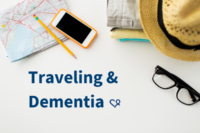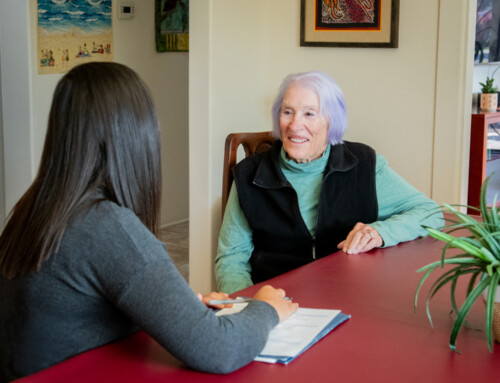 As COVID-19 restrictions are easing, more and more people are starting to travel again. We’ve put together a helpful guide for traveling with someone living with dementia. This outlines the potential benefits, safety best practices, and warning signs that the person may no longer be able to travel.
As COVID-19 restrictions are easing, more and more people are starting to travel again. We’ve put together a helpful guide for traveling with someone living with dementia. This outlines the potential benefits, safety best practices, and warning signs that the person may no longer be able to travel.
What are the potential benefits of traveling with someone with dementia?
A trip can bring physical, mental, and emotional benefits for someone living with dementia. Physically, there’s ability to get outside and increase vitamin D intake. Mentally, the novelty of new experiences like different daily activities, new sights, foods, or smells, are cognitively stimulating and good for the brain. Emotionally, a change of scenery can restore a sense of normalcy, spark new topics of conversation, and forge new connections between the person living with dementia and their care partner through shared experiences. A getaway can also be a form of self-care for everyone involved.
What are the potential risks of traveling with someone with dementia?
A change in routine can also be stressful for someone living with dementia, and could result in irritability and confusion. Wandering is also a critical risk to consider. At least 60% of people with dementia will wander at some point. The danger of this increases in an unfamiliar environment. As a care partner, you may not have access to the same resources to find someone who is lost as you would at home. For the person with memory loss, it can be scarier and more difficult to reorient in a new place. If they have wandered or gotten lost before, that may be a sign they should no longer be traveling.
RELATED | Wandering & Alzheimer’s: One program can make a difference
What are general best practices when traveling with someone with dementia?
At Alzheimer’s San Diego, we recommend doing the following:
- Travel during a time of day that the person with dementia is most alert or content.
- If that’s not possible, travel during off-peak times to avoid crowds.
- Plan for rest times each day throughout the travel. A realistic itinerary should factor in that both the person with memory loss and their care partner may need more rest/recovery time than usual.
- Pack items that will bring the person with dementia some comfort, such as pictures of loved ones, their favorite music, and tactile items.
- Pack an extra set of clothes, along with incontinence items.
- Inform other entities ahead of time that you are traveling with a person who has dementia. If you’re flying, contact TSA and the airline; if you’re staying at a hotel, let the staff know. As previously mentioned, wandering can happen at any time, especially if a person is feeling uncomfortable. The more people around them who are aware of this, the safer they will be.
- Keep your normal routine as much as possible, starting and ending the day around the same times as you would at home.
- Take a picture of the person living with dementia each morning. If they wander, you will be able to show first responders exactly what they were wearing and what they look like.
- Enroll in the MedicAlert national registry if traveling outside of San Diego County. If you’re traveling within the county, be sure you’re enrolled in the Take Me Home registry.
- Consider other forms of identification: sewing labels into clothing, wallet cards, ID tags that attach to shoes, etc.
- Bring a back-up of important items like eyeglasses in case they are lost.
- Make sure you have key numbers saved in your cellphone, such as doctors, family/friends you can count on in an emergency, or even Alzheimer’s San Diego (858.492.4400).
- As a care partner, don’t forget your own self-care needs: essential medications, comfort items, and the need for respite. Consider taking someone else on the trip with you to share in caregiving duties to avoid feeling overwhelmed.
RELATED | Join a Support & Discussion Group
What are the signs someone living with dementia should no longer travel?
At a certain point in the disease progression, it will no longer be safe for someone with dementia to travel. Warning signs include:
- The tendency to wander – this is so important to watch out for!
- Becoming overwhelmed in new places and/or around large crowds.
- Becoming fearful whenever the primary care partner is not around.
- Exhibiting extreme changes in behavior when their normal routine is disrupted.
- The care partner is unable to manage all of their person’s daily needs.
There is no one-size-fits-all policy when it comes to dementia care. While this is a general guide, we know every person’s needs and situation is unique. If you have questions about traveling with someone living with dementia, get free support from our dementia experts by calling Alzheimer’s San Diego at 858.492.4400 or emailing info@alzsd.org.




